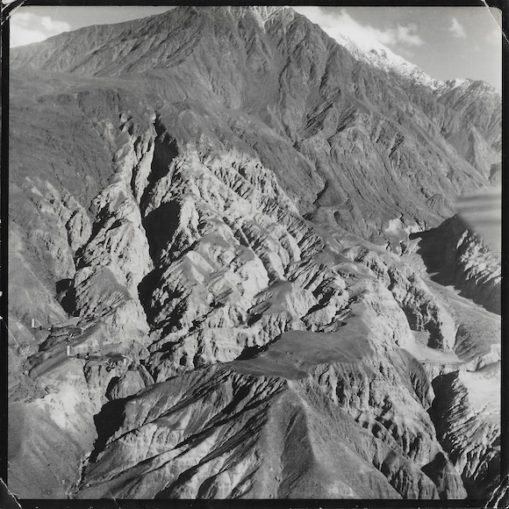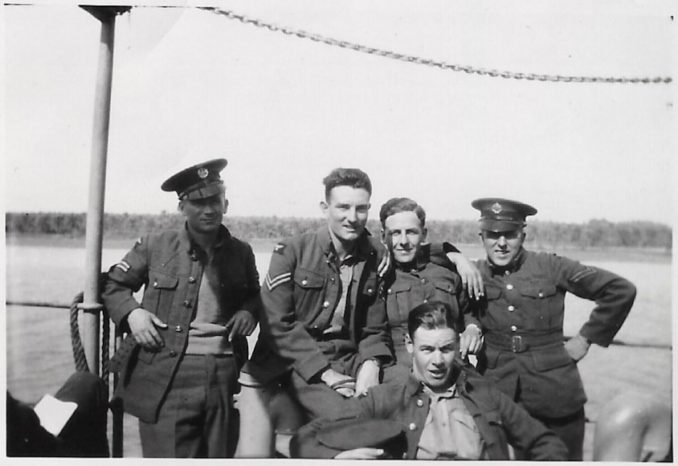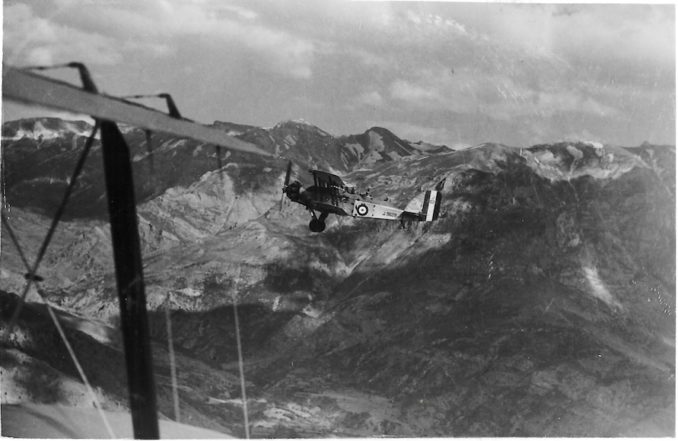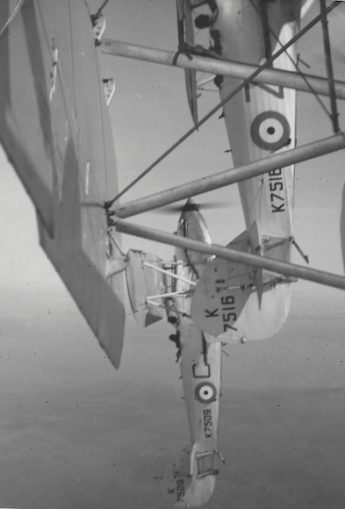In Part 3, I included a photograph of a Hawker Hart with most of its fabric covering stripped off as a potential Desert Mystery regarding its fate. Further research has revealed that K4907 apparently had suffered the effects of exhaust sparks setting fire to its sun-dried fabric and that it was in fact repaired and put back into service. Finally, it was SOC (struck off charge) for disposal in 1943 after being crash landed at RAF Habbaniya in Iraq.
For this final part of Desert Mysteries Redux, I looked at a mystery location that I discovered in researching the service life of my late uncle.
In his RAF flying Log, he had listed all of the “aerodromes” he had landed at as either a pilot or as a passenger. Apart from Halton, North Weald and Sutton Bridge in England, all of the other twenty-nine aerodromes listed are in Transjordan, Iraq or Egypt.
The last entry for him flying in England was in the rear seat of a Gordon from RAF North Weald in October 1934 undertaking “drogue towing” over Holbeach Ranges and the next is him as a passenger in a Vickers Valentia in February 1935 undertaking “forced landing practice (night)” at RAF Hinaidi in Iraq. All of the remaining flights in his logbook are within Transjordan, Iraq and Egypt.
However, within his collection of photographs are a number showing aircraft flying in a very mountainous region, taken presumably by an official RAF photographer, and a series of photographs taken by my uncle of various sites, buildings, antiquities and people that were clearly not out in the desert.

© John Tull 2024, Going Postal
Based on his photograph of what I have now identified as being Holy Church in Karachi, India (now in Pakistan), the mountains in these RAF photographs are the Himalayas and his series of photographs are of Karachi and its inhabitants.
So when and why did my Uncle go to India?

© John Tull 2024, Going Postal
Based on other photographs in his collection, I suspect that his route out from England in the winter of 1934 was by troopship, along with a number of other aircraftsmen posted to the Middle East, via Gibraltar to probably land at Port Said in Egypt. A photograph of a passenger train dockside presumably meant that they then transited overland, rather than via the Suez Canal, on the railway line via Ismailia to Suez.
From photographs of a different troopship, in what I take to be Suez harbour, they were then taken down the Persian Gulf, across the Gulf of Oman to be landed at Karachi and from where they ended up at the RAF Depot in Drigh Road.

© John Tull 2024, Going Postal
RAF Drigh Road is now the Pakistan Air Force Base “Faisal”, named after the late King of Saudi Arabia, and was used in WW2 by the USAF as a route stage in resupplying the Chinese forces under Chiang Kai-shek via Ledo Airfield in Assam – see Desert Mysteries Part 2.

© John Tull 2024, Going Postal
After being in Karachi for presumably a relatively short time, he was then posted for pilot training back to Abu-Sueir in Egypt before joining his first squadron as a pilot in Ismailia after he gained his “wings”.
So why did he go to Karachi? In the 1930s, the RAF was organised on lines similar to the Army whereby servicemen and equipment were first allocated to area depots before then being posted on as required to specific units.
This however changed in 1936 with the reorganisation of the RAF away from “Areas” into the “Commands” familiar from WW2 (Fighter, Bomber, Coastal and Training) and “Groups” which for Bombers were based on type of aircraft and which for Fighters were based around different geographical areas.

© John Tull 2024, Going Postal
This concludes the Desert Mysteries Redux series based on my research into the life and death of my uncle.
© text & images John Tull 2024


